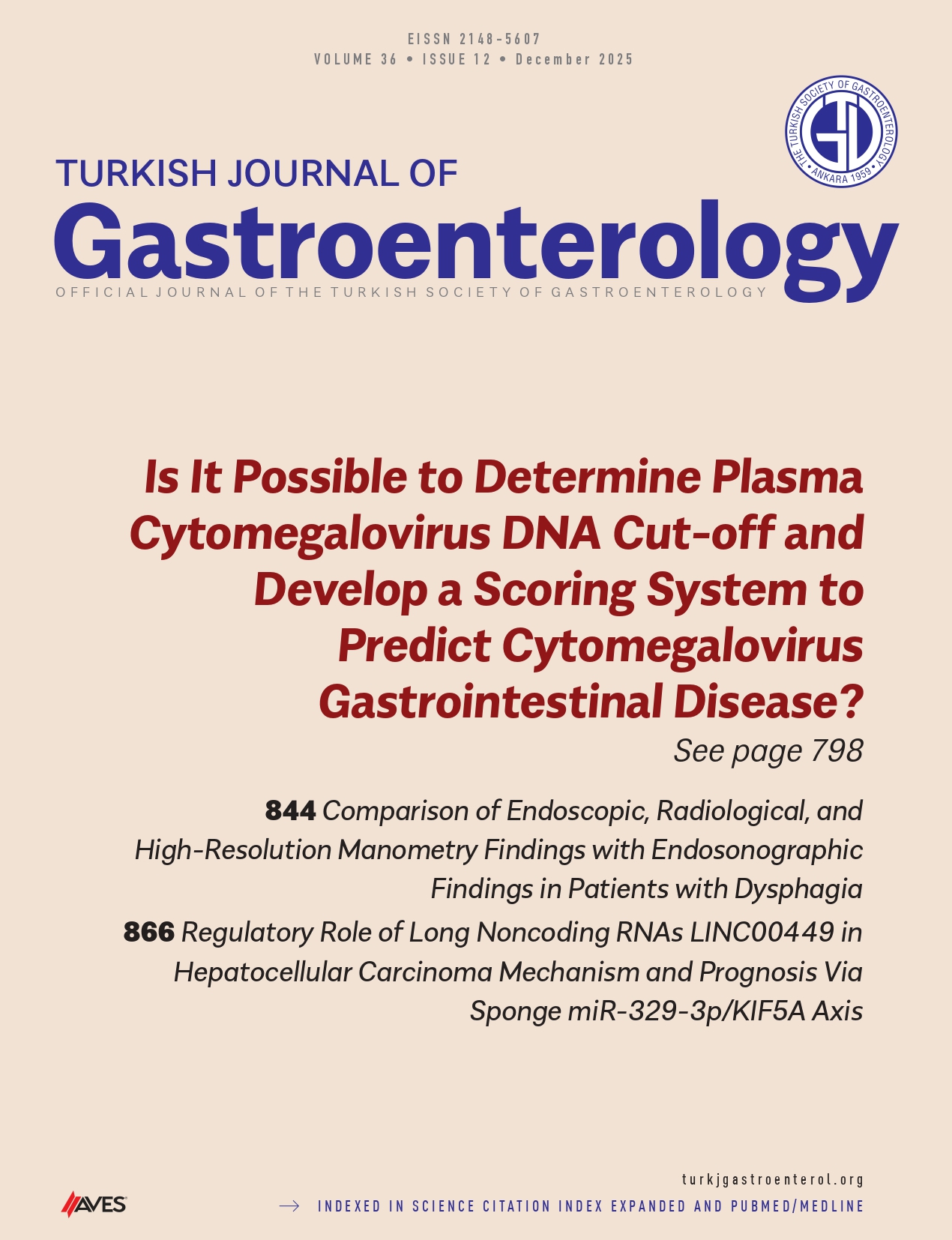Abstract
Background/Aims: To investigate the relationship between gamma-glutamyl transpeptidase (GGT) levels and histopathological status determined by biopsy in patients with chronic hepatitis B and C.
Materials and Methods: Patients with chronic hepatitis B and C who were referred to the Uludağ University Faculty of Medicine Gastroenterology outpatient clinic between January 2005-January 2011 and underwent liver biopsy were included in the study. Overall, 246 patients with hepatitis B and 151 patients with hepatitis C were enrolled. According to the evaluation based on the Ishak score, patients with a histological activity index (HAI) between 0-12 were defined as low activity, and those with an HAI between 13-18 were defined as high activity. In addition, patients with a fibrosis score of 0-2 were defined as low fibrosis, and those with a score between 3-6 were defined as high fibrosis; comparisons were made accordingly.
Results: In patients with hepatitis B, the mean GGT level was 38.86±42.4 (IU/L) in the low activity group and 60.44±44.4 (IU/L) in the high activity group (p<0.05). In hepatitis B patients, the mean GGT level was 26.89±14.83 (IU/L) in the low fibrosis group, whereas it was 65.60±59.7 (IU/L) in the high fibrosis group (p<0.001). There was no significant difference between HAI and fibrosis group with regard to GGT levels in the hepatitis C patients.
Conclusion: In conclusion, it is proposed that in patients with chronic viral hepatitis, GGT levels can be taken into consideration to predict advanced histological liver damage, especially in patients with hepatitis B.




.png)
.png)